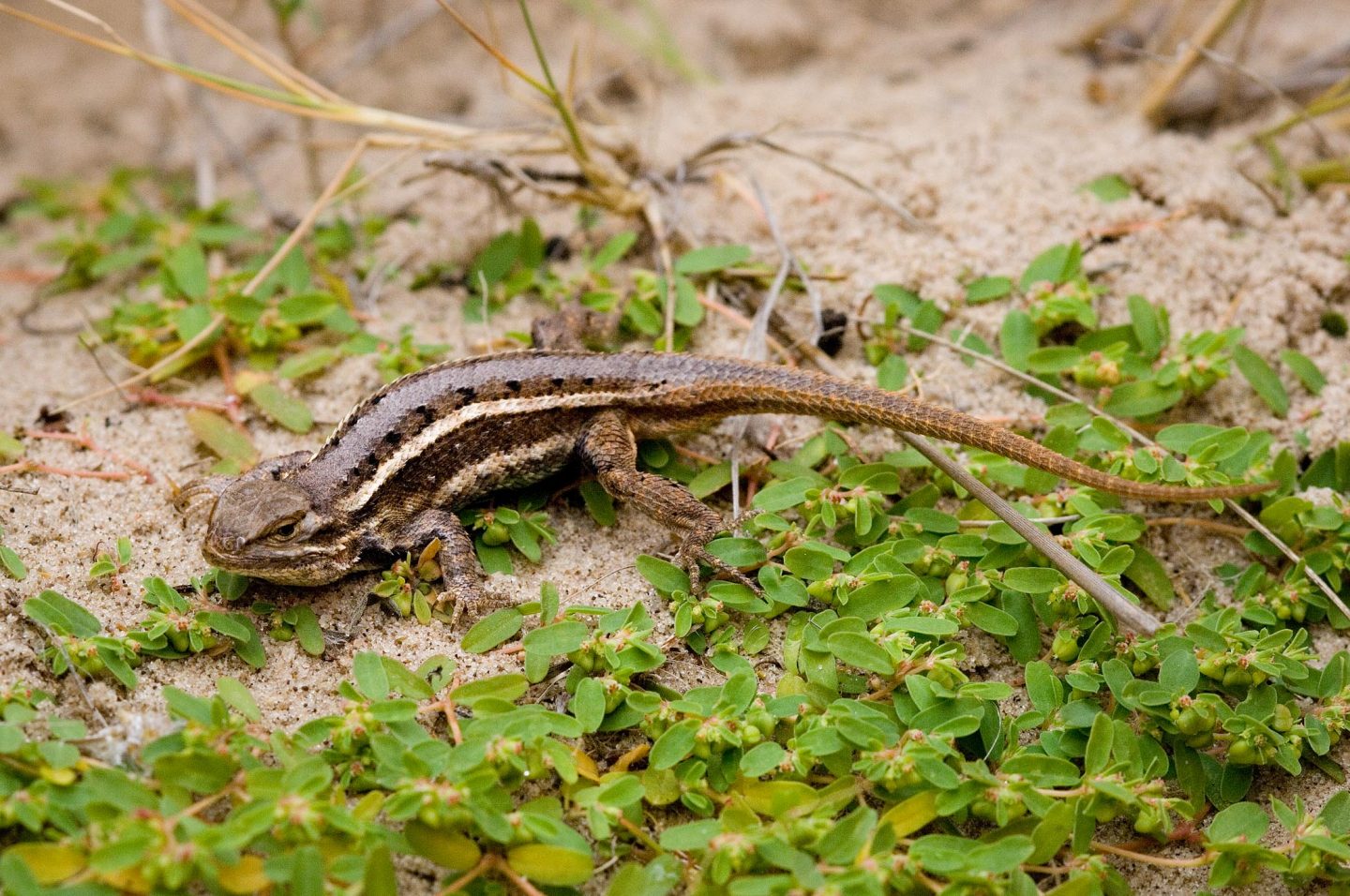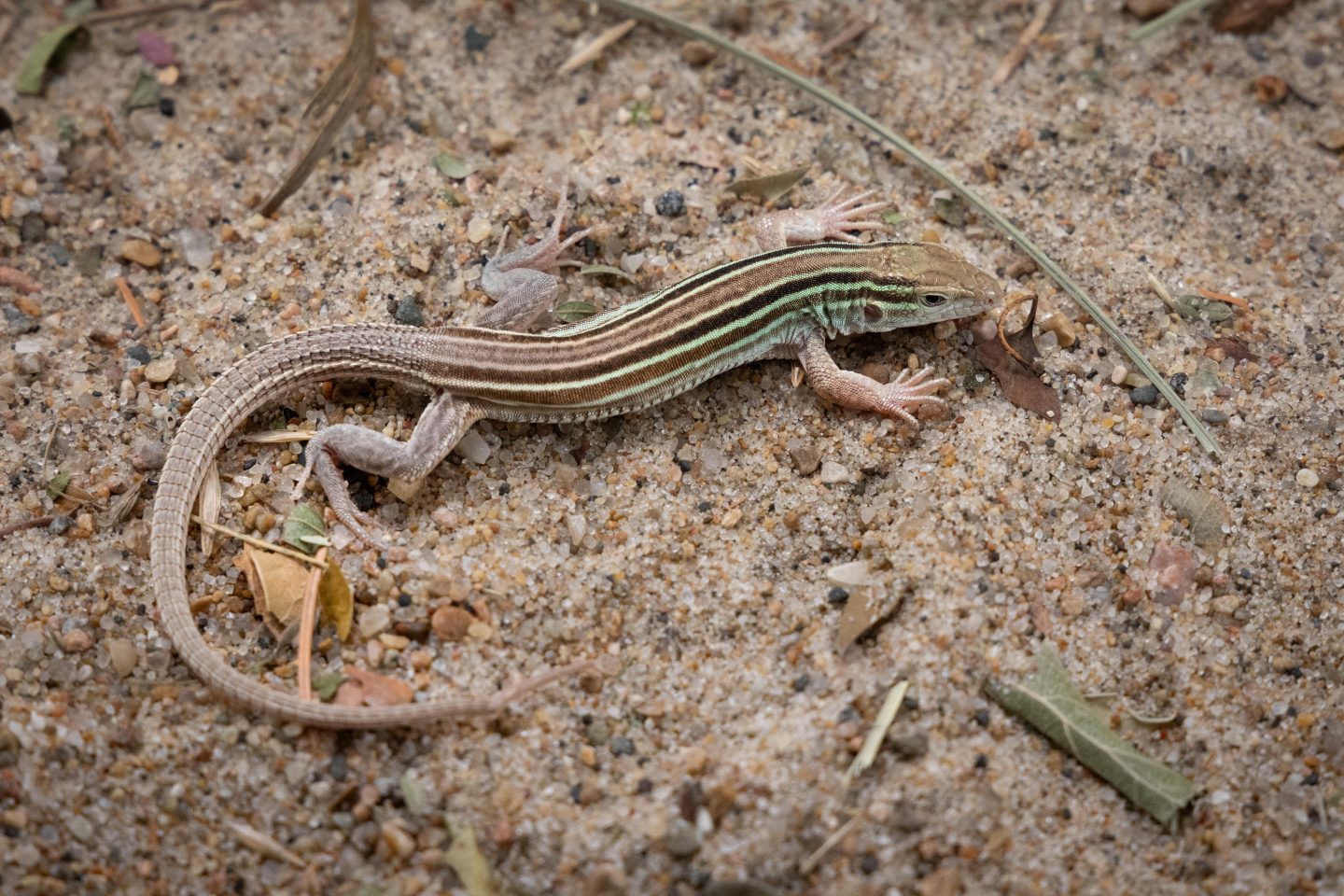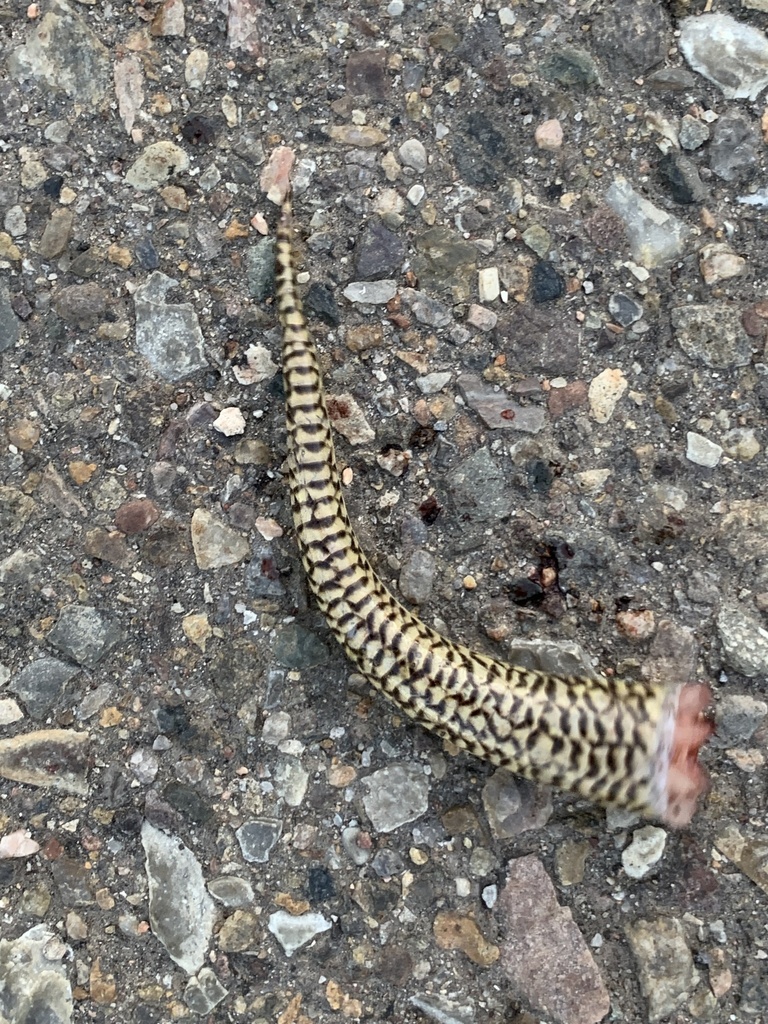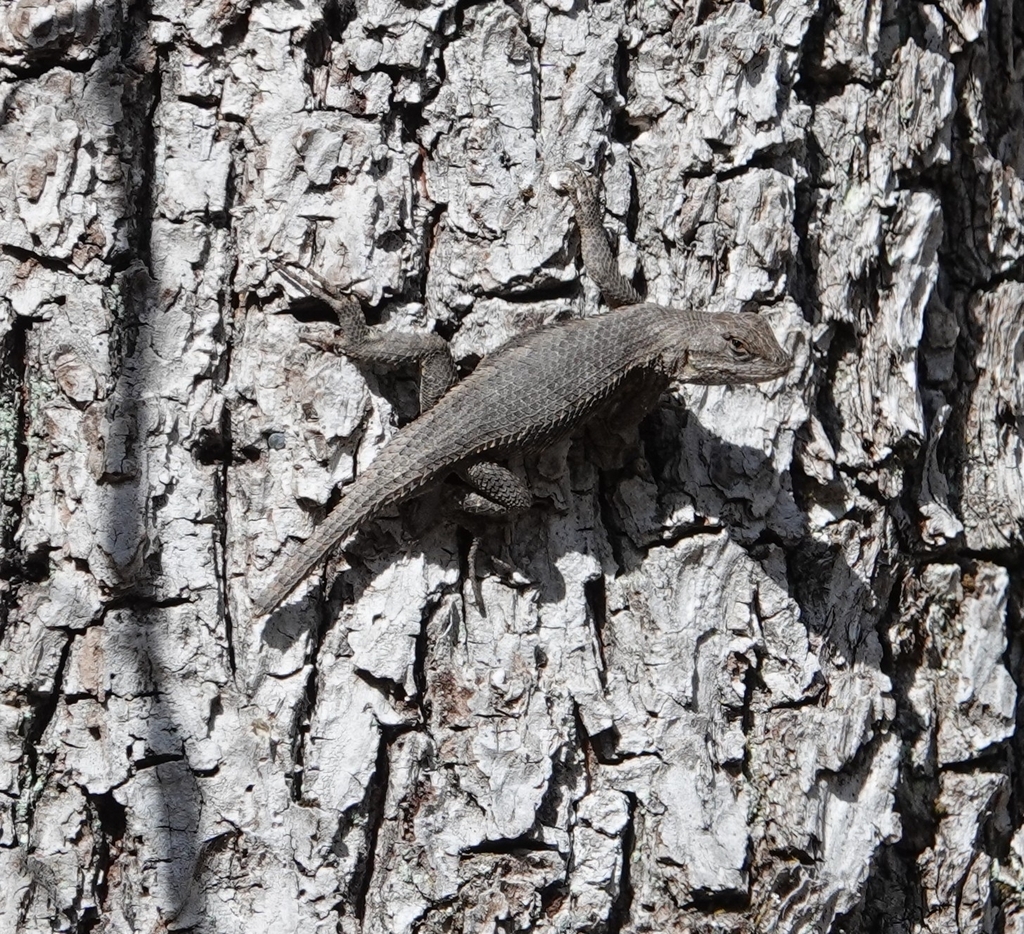
By Monica Macoubrie, Wildlife Education Specialist
When it comes to survival strategies, lizards have mastered the art of self-preservation with their incredible ability to shed and regenerate their tails—a phenomenon known as tail autotomy. This remarkable adaptation not only allows lizards to escape predators but also serves as a example of nature’s ingenuity. We’ll explore the science behind lizard tail autotomy, from the mechanics of tail regeneration to the evolutionary advantages that make these lizards the ultimate escape artists!
The Mechanics of Tail Autotomy
Tail autotomy is a biological process that allows certain lizard species to detach their tails when threatened. The tail is designed to break off at a predetermined fracture plane—a specific point of weakness that facilitates a clean and efficient break. When a predator grabs a lizard by its tail, the lizard can instinctively drop the appendage and make a rapid escape. Once detached, the tail continues to wiggle for a short time, creating an additional diversion that can capture the predator’s attention and create confusion, thus increasing the lizard’s odds of making a clean getaway.
This behavior has evolved over millions of years, showcasing lizards’ remarkable ability to adapt to their environments and the pressures of predation. The ability to shed a tail is particularly advantageous in environments where predators are plentiful, allowing lizards to escape lethal situations without severe injury.

However, this strategy is not without its costs. Lizards that lose their tails may experience reduced mobility and agility during this critical period of tail regeneration, which takes time and energy. The absence of a tail affects their balance, making it more challenging to navigate their environment. Additionally, tailless lizards may be more vulnerable to other predators, as they lack the advantage of their usual defensive weapon. Despite these challenges, the evolutionary benefits of tail autotomy often outweigh the drawbacks, enabling these resilient reptiles to thrive in a wide variety of habitats.
Regeneration – Nature’s Remarkable Repair Mechanism
The process of tail regeneration is equally fascinating. After a lizard sheds its tail, the body initiates a series of complex biological processes to regrow it. This intricate process begins with the formation of a blastema—a mass of undifferentiated cells that act like a blank canvas. These cells will eventually differentiate into the various tissues needed for the new tail, including muscle, skin and blood vessels. The regeneration process can take several weeks to months, depending on the species, the extent of the injury and environmental conditions, such as temperature and availability of resources.
Interestingly, the regenerated tail is not an exact replica of the original. While it regains some functional and structural features, such as the ability to aid the lizard with balance and movement, it often differs significantly in composition. The new tail typically lacks vertebrae and may be primarily made up of cartilage rather than bone, giving it a different feel and structure. Additionally, the coloration and texture of the regenerated tail may not match the original. The new tail might come in a slightly different hue or texture, often resembling a patchwork of colors rather than the uniformity of the original.

Evolutionary Advantages of Tail Autotomy
The evolutionary significance of tail autotomy cannot be understated. By enabling lizards to escape from predators, tail autotomy significantly increases their chances of survival and, subsequently, their ability to reproduce. After all, a lizard that can dash away from danger is much more likely to pass on its genes to the next generation. This trait is particularly advantageous in environments where predation pressure is high, such as dense forests, deserts or areas populated by larger predators. In these settings, being able to drop a tail and sprint away is the difference between life and, well, becoming a snack!
Over time, species that exhibit tail autotomy have not only survived but thrived and diversified, adapting to various habitats around the globe. It’s the evolutionary game of survival of the fittest, and lizards, with their nifty tail trick, have secured their place in the winner’s circle. From tropical rainforests to arid deserts, these adaptable reptiles have carved out niches that allow them to thrive.

Lizards that rely on tail autotomy include well-known species such as the prairie lizard (Sceloporus consobrinus), the northern prairie skink (Plestiodon septentrionalis) and various other Nebraska species. Each of these lizards has developed unique adaptations that enhance their ability to evade predators while still benefiting from the presence of a functional tail.
What’s even more fascinating is that tail autotomy isn’t just a one-size-fits-all strategy. Different lizard species have evolved different ways to make the most of their tail-shedding abilities. Some species can regrow their tails in a matter of weeks, while others may take months to regenerate fully. The new tail may be slightly different in texture, color or structure, but it serves its purpose—providing the lizard with a new opportunity for survival and adaptation.
